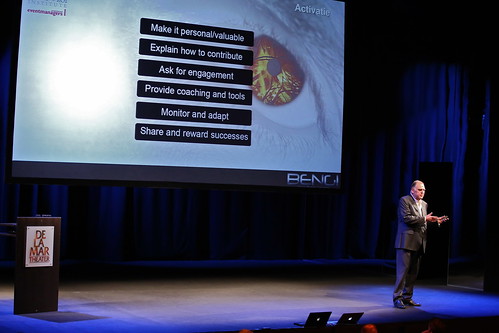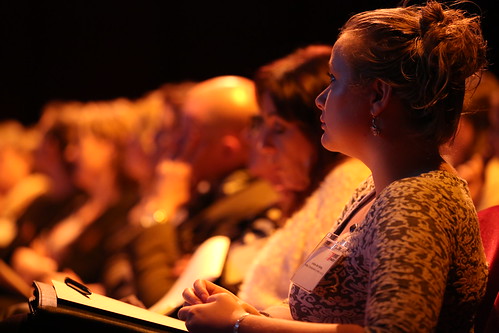More Networking
Increase
the networking time allotted within the day. Consider even changing up the way
in which you allow your attendees to network. Think – about speed networking
(similar to speed dating) or lunch round tables with facilitated discussions
and a speaker per table.
More
Breaks//Shorter Content
TED forged the path for this format with its 18 minute segments for speakers. As we move forward in a market where time = more money than before, it think it makes sense that we change up the format for conference goers. No one has the attention span to sit through an hourlong keynote session anymore.
Better Pre Event Communication
A
handy "Looking forward to Seeing You Tomorrow email" is all you need. Reminder of the event, all
the details, start time, dress code and any new highlights to point out. It will help drive people to actually show up, provides you one last real push of information. The more prepared your attendees are, the happier they are. It seems simple, but you will be surprised at the number of conference producers who don't bother with the night before email.
Digital
Check In
Revise
the badge/reg system to minimize frustration and long lines. There are so many event registration companies out there now, and the good ones are finally getting the praise they deserve. Search for one that fits all our needs and try it out. It is so much easier to walk up to a kiosk or a staffer with an iPad and receive your credentials and access than it is to have someone searching through pre-printed badges. If you are able to push it a little further, make your badges do more than just state a name and company. Incorporate NFC or a USB into it and track where your attendees go, who they visit and provide that info back to your sponsors.
Social
Seating
Conferences are no longer just about the content. People attend to network, to feel like they are part of the "gang" in their industry, to hear and be a part of awesome content and to meet vendors etc. They want to do more than just sit and listen. Create a new listening atmosphere for them by changing up teh traditional theater and classroom style seating arrangements. Incorporate clusters and lounge seating along with your classroom and crescent rounds and I think you will find attendees engage, and have a better experience. Not to mention give your conference a more modern look.
Better
Sponsor Experiences
Have
your sponsors move away from the generic booth. It seems simple right? Every
sponsor tells you, we want to create an experience and then they plop down a table, a wrinkled table cloth and a pop
up banner and call it a day. Don’t allow
any more standard booths. If a sponsor wants to be a part of your conference,
they will have to either choose from one your “sellable” experiences or
brainstorm a new one that works for them. Think Latte Lounge for a sponsor who
wants to spark up a caffeinated conversation and use the cups and napkins as
branding opportunities, a Smoothie
Station for a green start up, Magazine
Rack lounge for a publisher. Talk to your sponsors and find the right fit for
them. Your attendees will thank you.
Live Stream/Slide Sharing
I know, I know. Making your conference content available to those who didn't purchase a ticket just doesn't seem right. I don't think you need to make everything available for free, if you don't want to. I think you can have a content marketing team put together a series of items you are willing to release and have them push it out during your conference. Whether it is Live Slide Sharing, Live Streaming of a Keynote or just pushing out some of highlights of the conference getting your conference publicity is your main goal. Pushing content will help spread the word and stop people from finally asking you - will this be available later. We live in a sharing society now, so make sure your conference fits in.
No
More Paper
App
vs. printed program. Digital Check in Instead of Badges. There are so many ways to reduce paper. Try to ask your sponsors to reduce their hand outs. A great way is to encourage USB use. Download collateral onto a USB prior to the conference and have that be part of your attendee giveaways. Sponsors will be happy because their content is being given out and attendees are thrilled not to receive a conference tote filled with paper.
App vs. printed program is important. It's rare for an attendee to walk up to the reg desk and ask for a printed program. Most attendees sigh when handed a brick heavy agenda. There are so many amazing app companies out there now, there really isn't an excuse not to have one. You can push up to date information, agenda changes, and even sell areas on the app to sponsors.
Power
Make it easy for people to stay in their seats and get connected to a power source. Have plug-ins available (either in strips or hubs) so that people don't have to keep getting up and charging. You want people to stay connected, use social media and enjoy their experience. It's hard to do that when you are trolling for an outlet or sat next to a trash can in the next room because it's the only outlet available.








